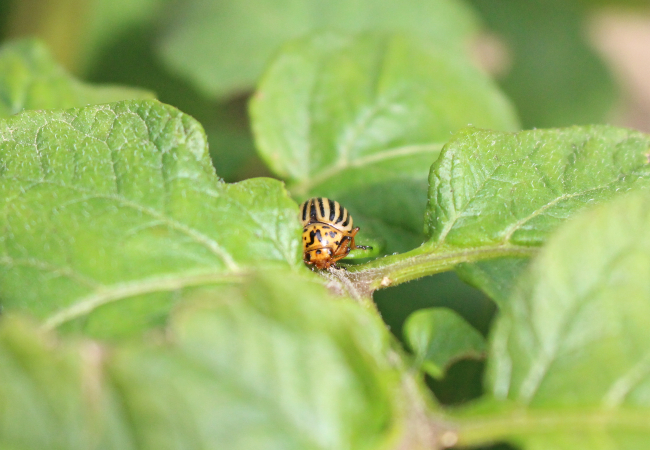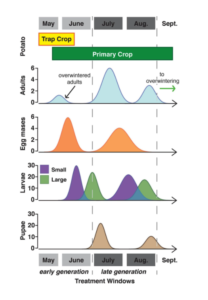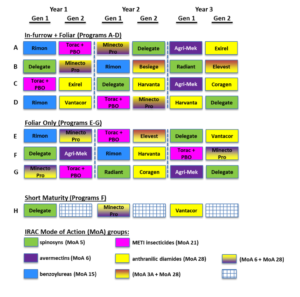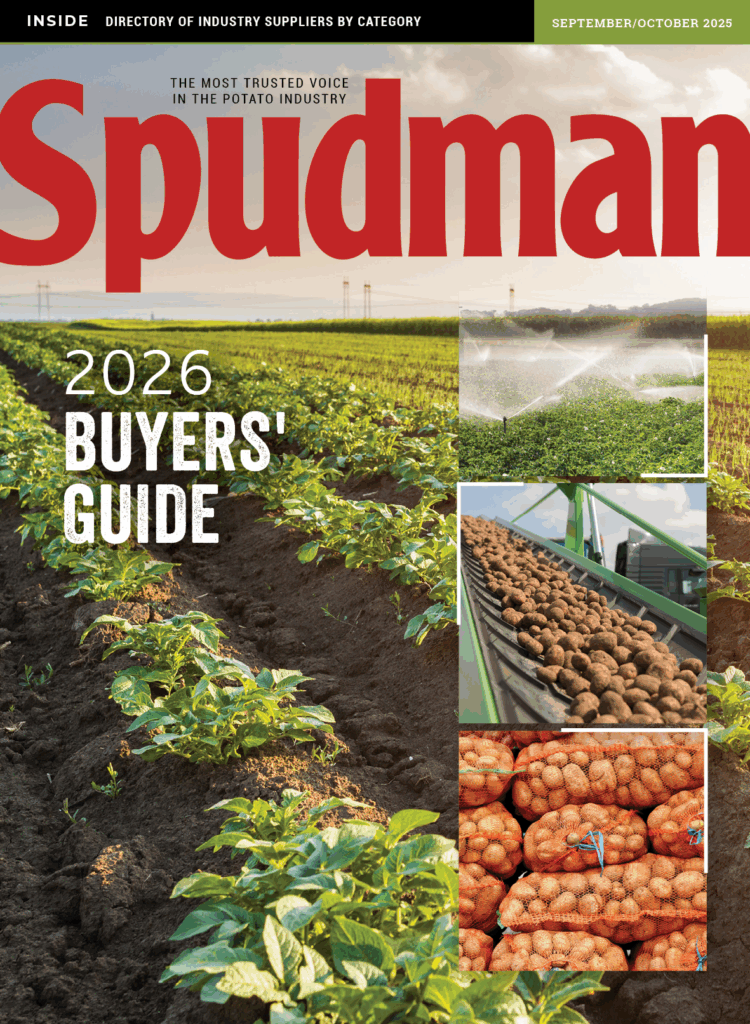
Colorado potato beetle insecticide resistance requires vigilance, stewardship
Over the past two decades in the Midwest, neonicotinoid insecticides have been the most commonly used management tool for the Colorado potato beetle (Leptinotarsa decemlineata).
The relative ease of applying neonicotinoids at planting (in-furrow or seed treatment) coupled with new, inexpensive and generic neonicotinoid formulations offered in the retail marketplace have become somewhat of a disincentive for producers to transition from these products to other mode of action (MoA) groups. The near continuous use of at-plant neonicotinoids has continued to contribute to resistant beetle populations in several production areas of the Eastern and Midwestern U.S. In the Western U.S., where their use has become more prevalent over the past decade, insensitive populations appear to be emerging in very select locations, as well as in areas where problematic populations of Colorado potato beetle (CPB) were not often observed.
Continued reliance on neonicotinoids will only accelerate resistance development and result in additional insecticide inputs to manage these populations. Resistance management recommendations for CPB have focused on rotation of insecticides within the growing season.
Growers using at-plant neonicotinoids for early-season beetle control are encouraged to rotate insecticide MoAs for later generations to delay resistance development. Although this short-term insecticide rotation has prolonged the utility of neonicotinoid insecticides, reducing reliance of a single MoA soil application at planting will improve the longevity of newer, more reduced-risk (RR) alternatives. Although the adoption of these at-plant, soil-applied neonicotinoid insecticides has been regarded as beneficial to the potato industry by limiting the use of more broad-spectrum, foliar insecticides (e.g. carbamates, synthetic pyrethroids, organophosphates), the continual emergence of insecticide resistance underlines the need to explore RR options and maintain stewardship with existing registrations.
Control of CPB populations with neonicotinoid insecticides has been declining nationally since the mid-2000s. Laboratory bioassay estimates have confirmed the suspicion that CPB resistance to the key neonicotinoids in our markets (clothianidin, imidacloprid, thiamethoxam) has increased throughout the Northeastern and Upper Midwest potato-producing regions. Although field-level failures are uncommon, the duration of beetle control within the growing season has declined significantly over time.
A reduced duration of control has necessitated the use of extra, foliar-applied insecticides in addition to the at-plant application. A greater proportion of growers shifting to these pest management supplementations is another indication that insecticide susceptibility has changed at regional scales. Growers at both ends of the resistance continuum will benefit by adopting resistance management strategies that incorporate a more diverse set of RR insecticides.
Transitioning from a continuous, at-plant neonicotinoid pest management program to one that incorporates newer RR insecticides will provide some challenges for growers who are accustomed to uniform, broad-spectrum pest control provided by these systemic insecticides.
Many of the alternative tools for CPB control belong to different MoA groups, including:
- Abamectin (e.g. Agri-Mek 0.7SC)
- Benzoylureas (e.g., Rimon 0.83EC)
- Anthranilic diamides (e.g. Coragen 1.67SC and Exirel 10OD)
- Spinosyns (e.g., Entrust & Delegate/Radiant),
However, they have limited efficacy against other key potato pests. Moreover, abamectin, benzoylurea and spinosyns are not systemically mobile in the potato plant, a property of at-plant neonicotinoid insecticides that growers value.
Where the neonicotinoids have historically functioned to control all feeding stages of CPB, several of the newer RR compounds function more ideally when targeting only specific stages; these are often the early larval instar stages. Here, it is important for producers or pest management specialists to scout fields regularly to determine exactly when the majority of individuals within the population(s) are developing through the most susceptible stages. Scouting services together with online phenology tools can increase our understanding of where — and when — CPB populations are reaching different population milestones.
It is also important to read the label of each product to learn about the season total maximum product allowable on a potato crop since not all labels contain similar (resistance management) language in terms of guidelines and use directions. As an example, some products limit the number of successive or sequential applications to a single generation within a production season (e.g. no more than two successive applications per crop season), whereas other labels are more permissive and allow for three or four successive reapplications of a single product within a generation. Even tank mix conditions can influence the performance of several newer active ingredients, and please pay special attention to these details stated on the product label. Successful incorporation of these newer RR compounds into more diverse insecticide rotations will benefit neonicotinoid resistance management, but also emphasize the importance of scouting for other common pests which may influence your choice of product to achieve control of both pests.

Flexible resistance management strategies that rotate chemistries in time and space are critical to maintain the efficacy of each individual pesticide used in a production sequence — Insecticide Resistance Action Committee (www.irac-online.org). When successful, growers can prolong the longevity (duration of effective control) of useful insecticides which, in turn, improves profitability and minimizes the need for additional insecticide inputs to manage problematic populations. Currently, potato growers have access to many MoA groups, delivery methods and formulations of insecticides to control CPB; but continue to use at-plant neonicotinoids for the control of other sucking insect pests in addition to the CPB. Incorporation of newer MoA groups into a long-term, CPB resistance management program will reduce selection pressure for resistance to any one of these new MoA groups.
The following suggestions assume a two-generation, CPB lifecycle common to many potato production regions of the temperate Midwestern U.S. (Figure 1). The growing season has been subdivided into three specific treatment windows, early generation, late generation, and spring trap crop (i.e., reducing populations of colonizing adults).

In regions where only a single generation occurs each year, growers may only need to use one MoA group applied early in the season for adequate control of larvae. Remember, nearly all of the compounds included have the greatest activity on small larvae (first and second instars). However, one compound — novaluron, IRAC group 15, benzoylureas — has effects on several life stages including molting disruption in small larvae, reduced female fertility and reduced viability of eggs that have not hatched. Growers will achieve the greatest control using novaluron during the early generation window when synchronous egg deposition occurs and larval life stages are the most uniform in the crop.
Multiple-season, CPB management plans are designed to limit exposure to MoA groups over consecutive generations (Figure 2). Here, populations are exposed to a given MoA group once every three to six generations.
Decisions on specific programs should be based on a reasonable estimate of neonicotinoid insensitivity observed or measured in commercial fields. Presented are several different scenarios that are adapted to potato maturity, choice of application approach and the degree of field-level neonicotinoid insensitivity.
 — Russell L. Groves, Ph.D., is a professor, Extension specialist and department chair of the University of Wisconsin-Madison’s Department of Entomology.
— Russell L. Groves, Ph.D., is a professor, Extension specialist and department chair of the University of Wisconsin-Madison’s Department of Entomology.














